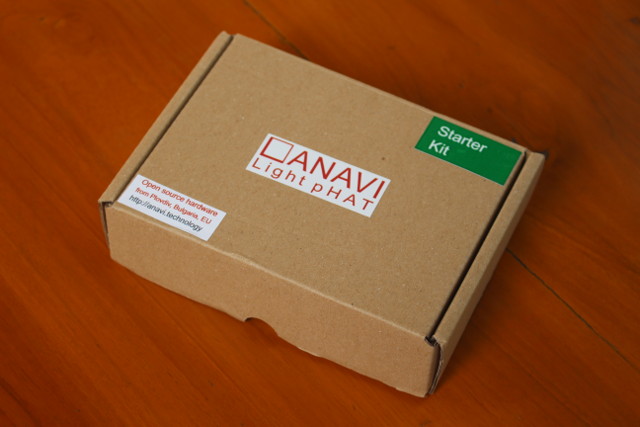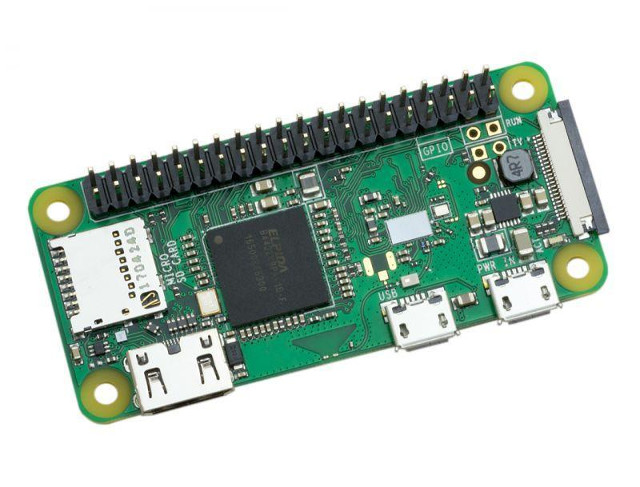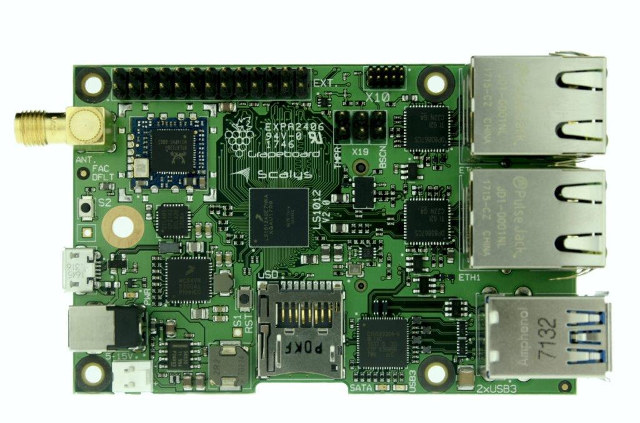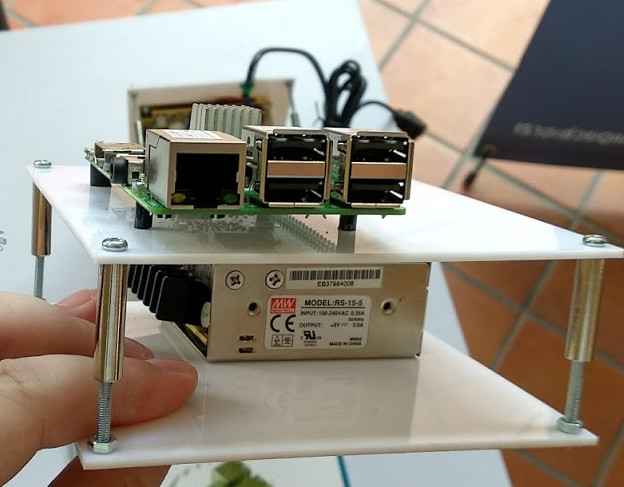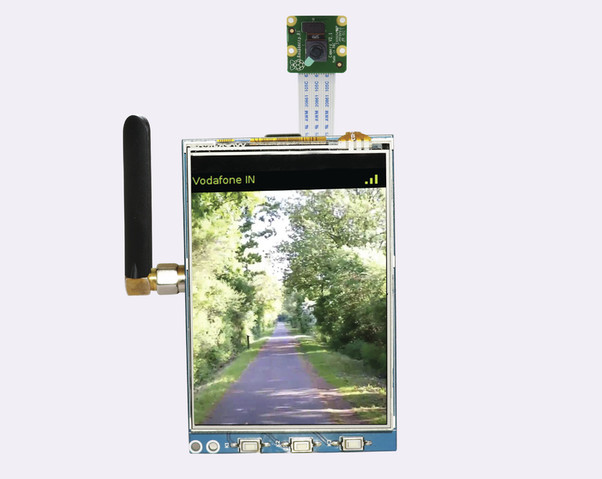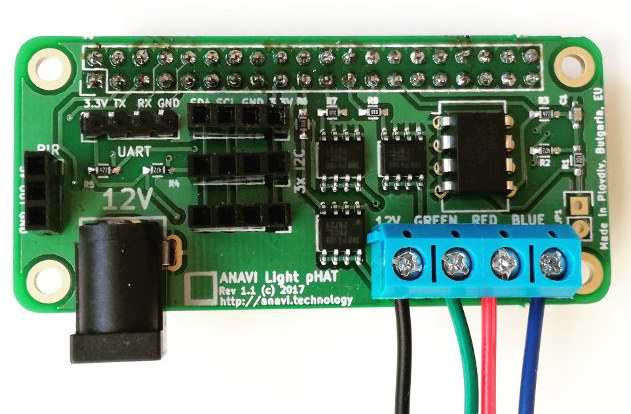Earlier today I wrote about FOSDEM 2018 schedule, and among the various talks I selected for my virtual schedule was “How to build an autonomous robot for less than 2K€”. Some excerpt from the abstract including a short description of the project, and its “open-sourceness”: PULUrobot solves the autonomous mobile robotics complexity issue without expensive parts, without compromise. By fearless integration and from-scratch design, our platform can do SLAM, avoid obstacles, feed itself, and carry payload over 100kg, for less than 2,000 EUR. Application ecosystem can be born around it, as we offer a ready-made Open Source (GPLv2) solution in a tightly coupled HW-SW codesign. So I decided to have a closer at this project, which can be used as a robot maid/helper of sort, and other applications. The robot was made by a brand new (July 2017) startup called Pulu Robotics Oy and based in Finland. They have three […]
FOSDEM 2018 Open Source Developers Meeting Schedule
FOSDEM (Free and Open Source Software Developers’ European Meeting) occurs every year on the first week-end of February, where developers meet for two days discussing about open source software projects. FOSDEM 2018 will take place on February 3-4 this year with 652 speakers, 684 events, and 57 tracks, an increase over last year 608 speakers, 653 events, and 54 tracks. There will be 8 main tracks namely: Community, History, Miscellaneous, Performance, Python, Security and Encryption, Space, and Global Diversity CFP Day. There will also be 33 developer rooms, and since the full schedule is now available, I’ll make a virtual schedule mostly based on sessions from the Embedded, mobile, and automotive, Hardware Enablement, and Internet of Things devrooms. Saturday 3, 2018 09:50 – 10:15 – Turning On the Lights with Home Assistant and MQTT by Leon Anavi In this presentation you will learn the exact steps for using MQTT JSON […]
Getting Started with ANAVI Light pHat Starter Kit with RGB LED Strip, Light Sensor
ANAVI Light pHAT is an expansion board best suited for Raspberry Pi Zero (W/WH) boards, but also working with any other Raspberry Pi boards with a 40-pin header, that can control a 12V RGB LED strip and sensors. The project’s crowdfunding has just been successfully completed on CrowdSupply with 82 pledges, but you can still pre-order the board or kits for $25 and up. The developer – Leon ANAVI – had sent me a starter kit a little while ago, and this week-end I had time to test the basic functionalities of the board. The package includes the pHAT board itself, a one meter RGB LED strip, an I2C sensor, and some stickers. The sensor is based on BH1750 ambient light intensity sensor. The light pHAT boards include a 4-pin 12V/RGB blue terminal, EEPROM, three I2C connecter, a 3.3V UART connector to access the serial console for debugging / running […]
“New” Raspberry Pi Zero WH Launched with Pre-Soldered Headers
Raspberry Pi Zero W was launched in February 2017 for $10 as an update to RPi Zero adding WiFi and Bluetooth connectivity. The Raspberry Pi foundation has now announced a new model called Raspberry Pi Zero WH. What does not extra H mean? H Bridge? nope. Hybrid? nope. WH like in white PCB? re-nope. H means the 40-pin header is soldered. It can be more convenient for people who don’t own a soldering iron, or don’t feel confident soldering on their own. Apart from the header, Raspberry Pi Zero WH specifications remain identical to the W version: SoC – Broadcom BCM2835 ARM11 processor @ 1GHz with VideoCore IV GPU System Memory – 512MB RAM Storage – microSD slot Video Output – mini HDMI port and composite video (via 2 unpopulated pins) Connectivity – 802.11 b/g/n WiFi and Bluetooth 4.0 USB – 1x micro USB OTG port, 1x micro USB port […]
Grapeboard Raspberry Pi Lookalike Comes with Dual Gigabit Ethernet, Two USB 3.0 Ports
Scalys is a startup founded in 2016 in the Netherlands by Sintecs in order to provide advanced high-performance embedded system solutions for automotive-, avionics-, defence-, industrial-, medical and telecommunication industries. So the company is rather new, but if you visit their website, you’ll find they already have several systems-on-module and single board computers (SBCs) based on NXP QorIQ processors. Grapeboard SBC is their latest product powered by NXP QorIQ LS1012A (LayerScape 1012A) single core SoC with 1GB RAM, and equipped with two Gigabit Ethernet interfaces, two USB 3.0 ports, an M.2 SATA connector, etc… that make it suitable for IoT applications such as sensor/IoT gateways, communication hubs, and secure edge devices. GrapeBoard specifications: SoC – NXP QorIQ LS1012A single core Cortex A53 processor @ up to 800 MHz with Packet Forwarding Engine System Memory – 1GB DDR3 Storage 64Mb (8MB) SPI NOR Flash for BCD and bootloader, 512Mb/64MB SPI NOR […]
MeanWell Mini Switching Power Supplies May Be Useful for Development Boards
While some people or organizations with lots of boards may use high-end USB hubs to power and control them, most people likely use wall adapters to power their development boards like Raspberry Pi 3, ASUS Tinkerboard, Orange Pi PC, and so on. At least that’s what I do, except in some cases when I suspect power issues, and I go with a more powerful SMPS (switch mode power supply). I don’t use it often because it’s a large brick and expose 220V. But the other day, as I attended Chiang Mai Maker Party, I found one maker uses some tiny (and cute) power supply from a company called Mean Well to power his Raspberry Pi boards. The model used above with RS-15-5 with takes 100-240VAC 0.35A input, and output 5VDC up to 3A. The power supply include AC Neutral, AC Live, Ground, DC V+ and DC V- pins where you […]
Turn Your Raspberry Pi into a “Smartphone” or Cellular IoT Gateway with PiTalk 3G HAT (Crowdfunding)
The Raspberry Pi boards are used in a countless number of projects, and some of those turn one of Raspberry Pi boards into a (thick) smartphone powered by Linux. The first one was probably PiPhone based on Raspberry Pi 1 Model B, and other followed suit such as TyTelli based on Raspberry Pi Model A+, and more recently ZeroPhone powered, as its name implies, by Raspberry Pi Zero board. UK based SB Components Ltd is offering another option with their PiTalk HAT based on a Quectel 3G UMTS module, and kits adding a 3.2″ to 5″ display, an optional camera, and/or Raspberry Pi 3 board. PiTalk board specifications: Cellular Connectivity Quectel UC15 3G/2G UMTS/HSDPA and GSM/GPRS/EDGE module with up to 3.6 Mbps download, 384 Kbps upload SMA antenna connector Push push SIM card holder Voice, SMS and data support Audio – 3.5 mm audio jack, speaker and mic support via […]
Anavi Light pHAT Adds RGB Light Strip Support to Raspberry Pi Boards (Crowdfunding)
He works as a software engineer for his main job, but Leon ANAVI is apparently enjoying his hobby of designing open source hardware, as after RabbitMax Flex home automation HAT, and ANAVI Infrared pHAT with IR transmitter and receiver, he has come up with as third project: Anavi Light pHat, an add-on board for Raspberry Pi 3/Zero (W) that adds support for RGB light strips. Light pHAT specifications: Compatible with 40-pin Raspberry Pi header EEPROM with board manufacturer information and a device tree fragment Terminal block for a 12V RGB LED strip 3x 4-pin I2C headers for sensor modules 1x 3-pin header for PIR motion sensor 1x 4-pin UART header for debugging Dimensions – pHAT form factor You first need to connect the pHAT to your board, and then LED strip, and you can then control the lights using Home Assistant open source home automation platform, with the strip integrated […]




